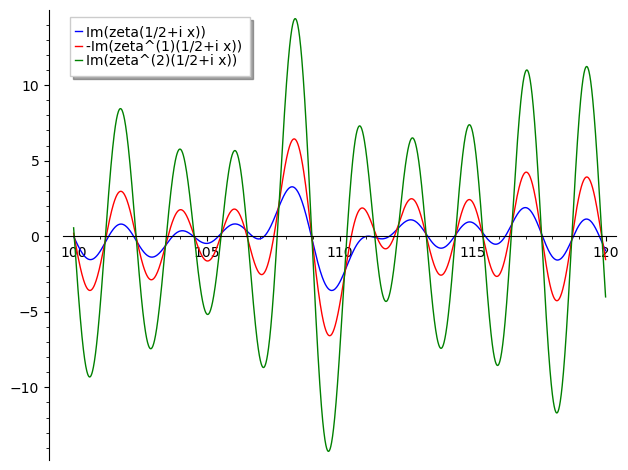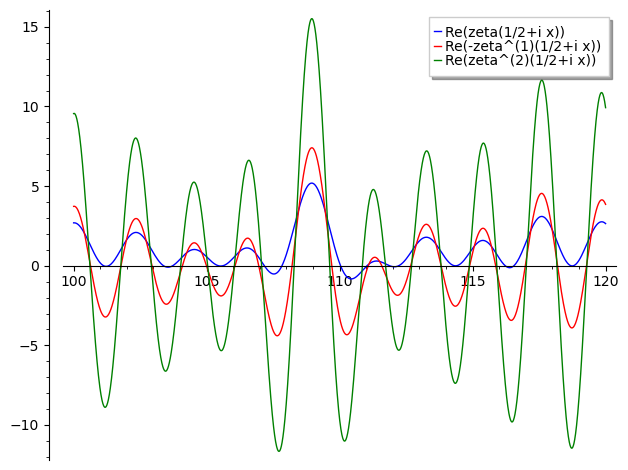Let $\zeta^{(k)}(s)$ denote the $k$-the derivative of zeta function.
Let $S=\{\Im(\zeta(\sigma +i t)),\Im(-\zeta^{(1)}(\sigma + i t),\Im(\zeta^{(2)}(\sigma + i t))\}$
We are interested in the plots of $S$ on vertical lines.
Here are the plots according to sagemath.
$s=1/2+ i x$
$s=0.4 + i x$
Q1 Why the plots appear similar, but scaled with small additive term, could this be because of functional equation?
Q2 Why the zeros appear grouped?
Here are the plots of the real parts
$s=0.4+i x$




